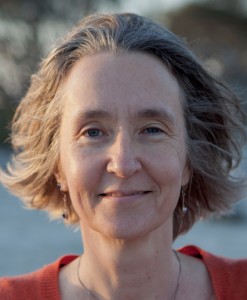I am Not Content: The Future of Education Must Come Today
Dr. Curtis Bonk. Thursday, April 9, 2015
Look left, look right, look back, and then look dead-on straight ahead…what do you see? Of course, the air is filled with e-learning opportunities as well as talk of educational transformation. So much news. So much progress. Each second of the day, dozens of learners discover shiny learning nuggets previous unknown. Each week, thousands of schools, universities, corporations, and government offices announce strategic plans for e-learning. Every month, hundreds of new online courses, programs, and certificates are offered. Year after year, research reports and meta-analyses indicate that there are undeniable positive benefits of online teaching and learning. The world of technology-enhanced learning, is looking up, up, up. But wait a minute. It is no time to be content. It is not time to relax and just let the “inevitable” future unfold in front of our eyes. No! We must all jump in and help build the changes we want to see. Besides, there are hundreds of millions of people who cannot wait. They need access to a more free and open education today–one with high quality content, interactive and engaging tasks, and motivating technology use. This is a land of where nature (i.e., technology) meets nurture (i.e., pedagogy). It is time you joined in to build the future. Those attending this talk should be cautioned to check their hearts and credits cards at the door since this will be an emotionally-packed talk intended to make you act.
Curt Bonk is Professor of Instructional Systems Technology at Indiana University and President of CourseShare. Drawing on his background as a corporate controller, CPA, educational psychologist, and instructional technologist, Bonk offers unique insights into the intersection of business, education, psychology, and technology. He received the CyberStar Award from the Indiana Information Technology Association, the Most Outstanding Achievement Award from the U.S. Distance Learning Association, the Most Innovative Teaching in a Distance Education Program Award from the State of Indiana, and, in 2014, the Mildred B. and Charles A. Wedemeyer Award for Outstanding Practitioner in Distance Education. A well-known authority on emerging technologies for learning, Bonk reflects on his speaking experiences around the world in his popular blog, TravelinEdMan. He has authored several widely used technology books, including The World Is Open: How Web Technology Is Revolutionizing Education(2009), Empowering Online Learning: 100+ Activities for Reading, Reflecting, Displaying, and Doing (2008), The Handbook of Blended Learning (2006), and Electronic Collaborators (1998). His latest book, Adding Some TEC-VARIETY: 100+ Activities for Motivating and Retaining Learners Online (2014), is freely available. See Bonk’s homepage for his archived talks and Web resources. Curt can be contacted at: cjbonk@indiana.edu or curt@worldisopen.com.
Today anyone can learn anything from anyone else at any time.
Dr. Curtis Bonk
Defining Accessibility
Sarah Horton. Friday, April 10, 2015
We typically define accessibility as compliance with standards. For those with responsibility for digital accessibility, compliance can seem daunting, if not impossible. So many factors that influence accessibility fall outside of central control. What about third-party software used to provide central services? What about content provided by faculty and students? What about all the software in use that isn’t even known of, never mind supported, centrally? The digital campus of most colleges and universities is loosely governed, making campus-wide adherence to accessibility standards a challenging goal in higher education.
What if, instead of standards compliance, we define accessibility as making a commitment and demonstrating progress? In this scenario, accessibility would begin with a clear, institution-wide commitment to providing digital resources that people with disabilities can use successfully. The accessibility commitment would be central to the mission of the institution—an abiding core value. Next would be establishing a baseline defining the current state of accessibility and then improving accessibility in current resources, while at the same time laying the foundation to include accessibility in all new resources. Individuals responsible for accessibility would be equipped with the knowledge and skills to successfully meet their obligations. A coordinated program with continual assessment would show progress toward achieving accessibility.
In this way, accessibility becomes a process that focuses on people and targets success.
Sarah Horton started her career in interaction design in 1991 at the Yale Center for Advanced Instructional Media, creating award-winning interactive instructional software. She was an instructional technologist at Dartmouth College for 11 years before becoming Director of Web Strategy and Design. In this role, she was responsible for planning and developing Dartmouth’s digital environment, leading a team of user-experience professionals responsible for web and media design, development, and production. More recently, Sarah was Web Strategy Project Lead at Harvard University, responsible for strategy and user experience design for the Harvard Web Publishing Initiative. Sarah is currently Director of Accessible User Experience for The Paciello Group.
Improve quality of life through good design
Sarah Horton


